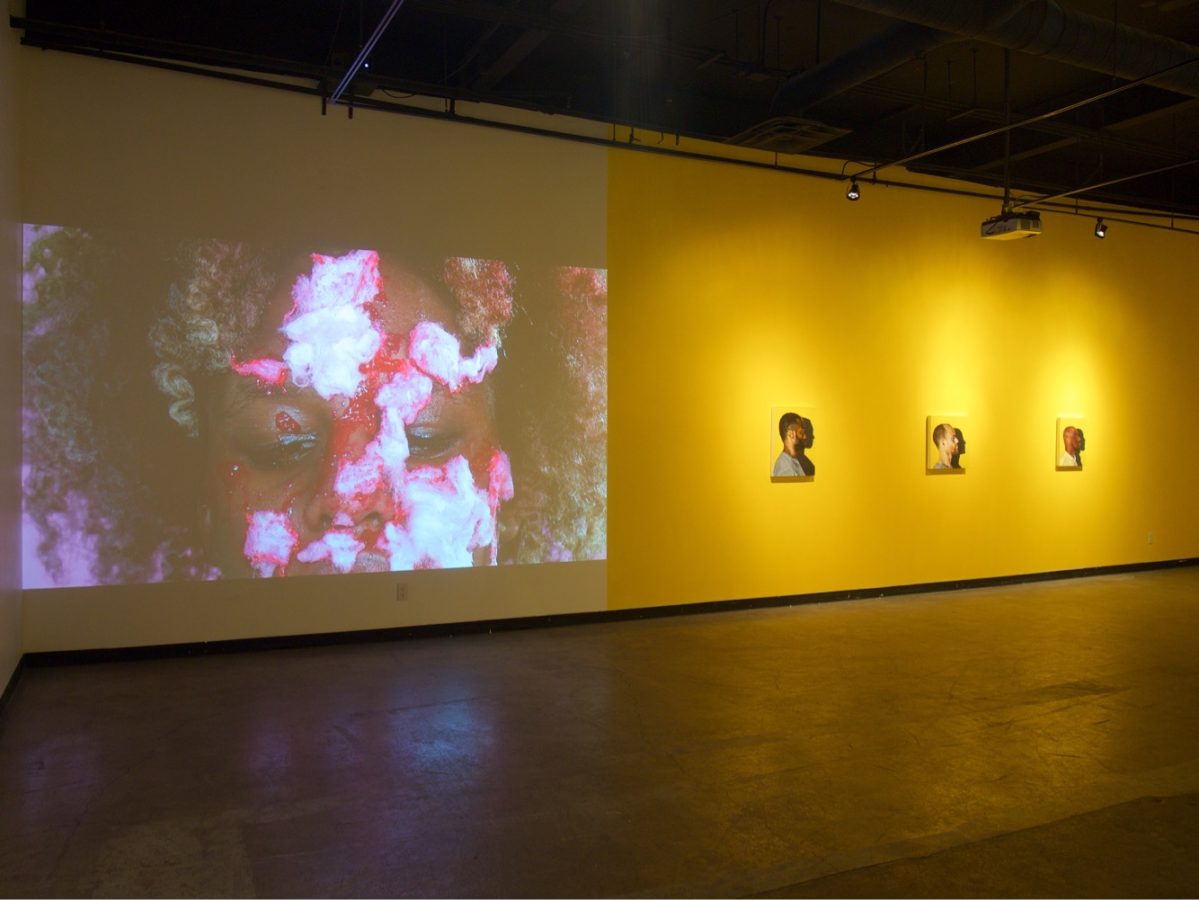Skin Glowing in the Moonlight Brings the Poetics of Contemporary Black Experiences to Latitude 53
 Supplied
SuppliedWhat: Skin Glowing in the Moonlight, by Shantel Miller and Danièle Dennis
Where: Latitude 53
When: April 13 – May 27, 2017
Admission: By donation
How can we subvert anti-Black racism’s hold on visual culture? Shantel Miller and Danièle Dennis channel Solange as they mobilize spectators to challenge dominant narratives and reflect on contemporary Black experiences.
Skin Glowing in the Moonlight is styled after a verse in the song “Scales” on Solange’s 2016 album, A Seat at the Table. Toronto-based artists Shantel Miller and Danièle Dennis are drawn to Solange’s work through what they see as a shared commitment to reflecting on contemporary experiences of Blackness through creative means. The use of Solange’s lyrics in this title functions as a sort of code, where those familiar with the singer-songwriter’s work may identify the exhibition as a space for examining Black experiences.
While initially apprehensive about this title’s invocation of the widely-acclaimed film Moonlight, the artists recognized that this connection might serve as an entry point for viewers into the themes of skin, colour, and light explored in the exhibition. Skin Glowing in the Moonlight is composed of three distinct bodies of work — a portrait series titled Side Profile by Miller and two video performance installations by Dennis — all of which interact to provide a multi-faceted reflection on contemporary Black experiences and their distortion through prejudicial narratives.
Shantel Miller’s Side Profile series melds the intimacy of portrait painting with the scrutinizing gaze of mugshot portraiture to interrogate harmful, pervasive representations of Black men. An unsettling halogen yellow tone bathes the gallery walls in such a way that the canvases — which have been installed at eye level – emerge as extensions of the space that have been brought under a spotlight. Each piece is titled after the sitter’s first name. The subjects of Side Profile are family members and friends of the artist.
“The series was birthed out of my relationship with my brothers,” Miller explains. “I contrast the sensitivity I developed at home towards Black men with how they are scrutinized by society.”
Miller’s sensitive treatment of her sitters imbues the figures with a sense of personality. Tension emerges as the sitters assert themselves as subjects in the face of visual conventions designed to categorize, distort, and dehumanize. The emerging interaction is one where gaze holds power, and implicates the spectator as a potential agent of epistemic violence. While averted eyes are often associated with subordination and vulnerability, refusal to meet the spectator’s gaze is resignified here as a form of protest against the viewer’s presumed authority.
“I’ve painted my subjects in side profile as a method of redistributing power as they refuse to meet the gaze of their voyeur,” Miller adds. “Their bodies are open to consumption, but it’s their eyes that render the viewer as an intruder.”
Involving the spectator in a recognition of Black subjecthood and its erasure through pervasive negative images is vital to the consciousness-raising work of the Side Profile series. To this end, Miller believes that the viewer, subject, and the relationship between the two must be activated for the piece to be successful.
“Collectively, these elements work together to help unravel the systemic politics inherent in looking and how these politics alter perceptions,” she explains.
Danièle Dennis explores narratives surrounding Blackness and Black women in particular through her two video performance-installations, Colour Me Bad and Try a Little Tenderness. In the former, Dennis performs three constructs of Blackness by colouring her body with berries, spices, and dirt. By applying materials directly onto her skin, she interrogates the arbitrary narratives imposed on Blackness and asks, “What does it mean to be Black?”
Try a Little Tenderness poetically responds to tiresome calls disproportionately directed at women of colour to make themselves appealing to others and engage in unrecognized emotional labour. Dennis applies tufts of bright pink cotton candy to her face as alienating opera music plays in the background. While the sugary confection appears soft and endearing at first, it rapidly transforms into a sticky tar that eventually hardens into uncomfortable sugar crystals. This literal enactment of sugarcoating illustrates the violence inherent in the angry Black woman trope and its role in policing Black feminine expression through humiliation.
Miller and Dennis weave distinct but interconnected conversations about experiences and representations of Blackness in North America. The works in Skin Glowing in the Moonlight collaboratively build a space to interrupt, confront, and rewrite harmful dominant narratives of Blackness. Even as they are enriched by sharing a space, Miller and Dennis’ works draw from each respective artist’s individual experience and should be read as such.
“While a relationship between both bodies of work is evident and important, it’s also crucial to consider the many differences between the works produced by two black women,” Miller notes. “At the end of the day, our experiences may be similar but they are very different.”




